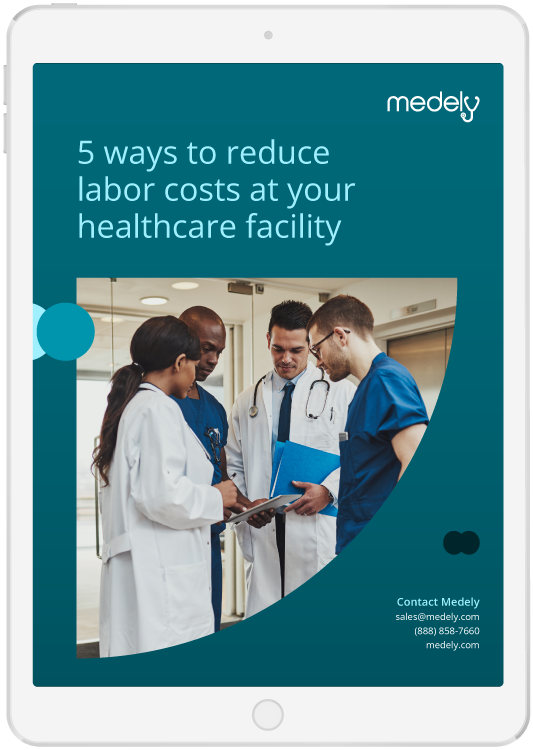In recent years, healthcare organizations have increasingly relied on extended workforce to supplement their permanent staff. This trend has been driven by a range of factors, including staffing shortages, fluctuating demand, and the need for specialized skills. However, managing an extended workforce effectively can be challenging, particularly in a fast-paced and constantly changing industry like healthcare. One way to evaluate the effectiveness of extended workforce management strategies is to measure the return on investment (ROI) of these initiatives.
Extended workforces and cost savings
There are several key metrics that healthcare organizations can use to measure the ROI of extended workforce management strategies. One of the most important is cost savings. By optimizing the use of contingent workers, healthcare facilities can reduce their labor costs and minimize the impact of staff shortages on productivity. For example, temporary staff can be brought in to cover peak demand periods or to provide specialized skills that are not available among permanent staff. By using temporary staff only when necessary, healthcare organizations can reduce their payroll expenses and avoid overstaffing. This could really become beneficial for facilities that experience wild variations in demand week-to-week like an Ambulatory Surgical Center (ASC).
Monitor patient outcomes
Another important metric for measuring the ROI of extended workforce management strategies is the impact on patient outcomes. Adequate staffing levels are essential to providing high-quality care and achieving positive patient outcomes. By maintaining the availability of specialized skills and ensuring that staffing levels are appropriate for the workload, healthcare facilities can improve patient satisfaction, reduce wait times, and prevent adverse events. These factors can lead to increased patient retention rates and revenue growth.

5 Ways to Reduce Labor Costs at Your Healthcare Facility
Facilities are constantly working to optimize their operations and cut costs without compromising patient care. In this ebook we’ll focus specifically on five strategies to reduce labor costs without compromising patient safety or satisfaction. In this eBook, you’ll learn:
- ■ Implementing an on-call staffing system.
- ■ Creating a float pool.
- ■ Utilizing per diem staff.
- ■ Investing in workforce optimization technology.
Impact on full-time staff
Improved workforce management can also have a positive impact on staff engagement and retention. By implementing effective communication, training, and recognition programs, healthcare facilities can create a more supportive work environment that fosters employee loyalty and reduces turnover. This, in turn, can result in a more experienced and knowledgeable workforce, which can lead to improved patient outcomes and reduced costs associated with staff turnover. Also, maintaining appropriate levels of patient-to-staff ratios will help prevent burnout among your full-time staff. Finding and managing an extended workforce through Medely can help fill urgent and long-vacant needs quickly and efficiently.
Using data to manage staffing spend
Measuring the ROI of extended workforce management strategies can help healthcare organizations optimize their staffing budget allocation. By identifying which strategies have the greatest impact on ROI, healthcare organizations can allocate resources more effectively and make data-driven decisions about future investments. For example, an analysis of the ROI of different staffing models may reveal that a combination of permanent and temporary staff is more cost-effective than relying solely on permanent staff or outsourcing to traditional, costly staffing agencies.
ROI calculation can help healthcare facilities identify areas for improvement in their extended workforce management strategies. By analyzing the results of different strategies, healthcare organizations can determine which ones need to be refined or replaced and develop a roadmap for continuous improvement in managing their extended workforce. This approach can help organizations stay ahead of changing market conditions, such as fluctuations in demand or shifts in skill requirements.
The challenges of measuring ROI
There are several challenges associated with measuring the ROI of extended workforce management strategies. One of the most significant is the difficulty of quantifying the impact of these initiatives on patient outcomes. While patient satisfaction surveys and other metrics can provide some insight into the effectiveness of extended workforce management strategies, there is no guarantee that these metrics are a direct reflection of the quality of care provided. Moreover, it can be challenging to isolate the impact of workforce management strategies from other factors that may affect patient outcomes, such as changes in clinical protocols or advances in medical technology.
Another challenge is the complexity of measuring the cost savings associated with extended workforce management strategies. While it is relatively easy to quantify the cost of hiring temporary staff or outsourcing staffing services, it can be more difficult to measure the impact of these strategies on overall labor costs. For example, the use of temporary staff may reduce payroll expenses, but it may also lead to higher costs associated with training and onboarding new staff.
Despite the challenges, measuring the ROI of extended workforce management strategies is essential for healthcare organizations looking to optimize their operations and improve patient outcomes. By using data-driven approaches to evaluate the effectiveness of different workforce management strategies, healthcare facilities can make informed decisions about future investments and continuously improve their operations. This, in turn, can lead to better patient
How Medely can help
Medely’s direct-to-pros platform gives healthcare facilities the power to connect with nurses and allied healthcare professionals looking to fill per diem shifts and assignment opportunities. Through our powerful extended workforce management system, you can track shifts, manage spend, and use historical data to predict when you’ll need to invest more or less in staffing.
To save on training and onboarding new temporary staff, Medely gives facilities the power to build float pools in our platform of their favorite professionals. These favorites can be alerted first when you post a job.
Also, our tech helps us cut down on the overhead that plagues traditional agencies. Our leading edge technology helps us pass the savings on to facilities, thereby making it more efficient to choose a Medely professional over working with traditional, slower agencies.
To post your first request, click the button below.
Related Articles
- Healthcare Staffing: Should Your Facility Hire Per Diem, Local Assignments, or Travel Nurses?
- Building Cohesive Teams with Per Diem Staffing
- Technology is Driving the Future of Work in Healthcare
Revolutionize your healthcare facility with Medely!
At Medely, we understand the critical role healthcare professionals play in patient care. Our platform can help you address staffing shortages and improve patient outcomes.
Join thousands of healthcare facilities already benefiting from Medely’s:
- Rapid Staffing Solutions
- Qualified and Verified Healthcare Professionals
- Easy Scheduling and Communication
- 24/7 Support and Flexibility
Don’t let staffing shortages affect your patient care.



